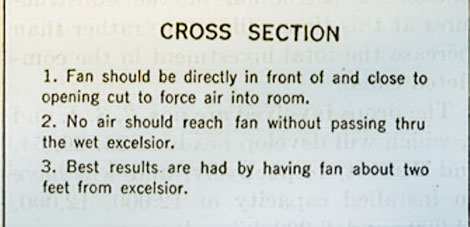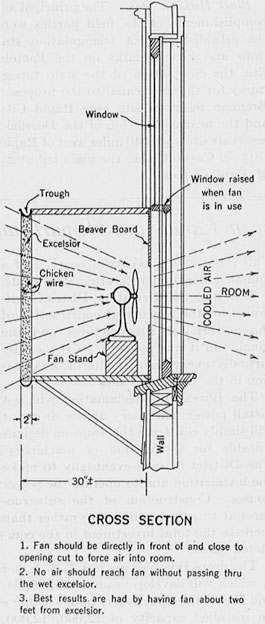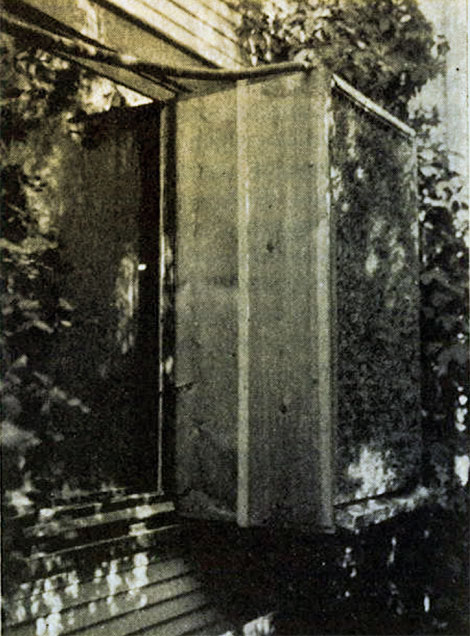

 Air cooler instructions.
Air cooler instructions. Air cooler diagram.
Air cooler diagram.On the Salt River Project in Arizona, more than 1,000 home-made air coolers were installed in homes during 1935. Those who made and used them testify to their effectiveness in increasing the comfort of the living and sleeping quarters in very hot weather. The air coolers are so simple and the materials needed in their construction so easily obtained that many project settlers and residents of project towns will be interested in the description of them. The only requirement for the installation which may limit their use is that the house must be wired for electricity, since an electric fan is an integral part of the air cooler.
The air cooler is made of a wooden box made to fit tightly in the lower half of a window, a bit of excelsior, a tin trough perforated to spread water through the excelsior, and a good-sized electric fan. The fan draws air through the moistened excelsior and in doing so lowers its temperature. The temperature of a room can be lowered 10 to 15 degrees with one of these home-made air coolers.
A cooler will use from 25 to 100 gallons of water per day, depending upon its size, the number of rooms to be cooled, and also upon the temperature and moisture content of the air out of doors. The water tank for the cooler can be chosen with a little practical experimenting. Enough water should be applied to keep the excelsior moist. With long continued use the excelsior may become sour. It should be changed regularly to avoid tainting the air with unpleasant odors.
 Air conditioner.
Air conditioner.The accompanying drawing shows the essential features of the air cooler. Remember, the box must fit tightly into the window so that all the air entering the room will be drawn through the moistened excelsior. A 15-inch fan generally is used for an ordinary room.
These air coolers became so popular on the Salt River Project in 1935 that excelsior was shipped in by the carload.
Adapted from an article by L. H. Mitchell, Field Supervisor, Bureau of Reclamation, in The Reclamation Era. Vol. 26 No. 8, pg. 196. Department of the Interior, Bureau of Reclamation, Washington, D.C. 1936
